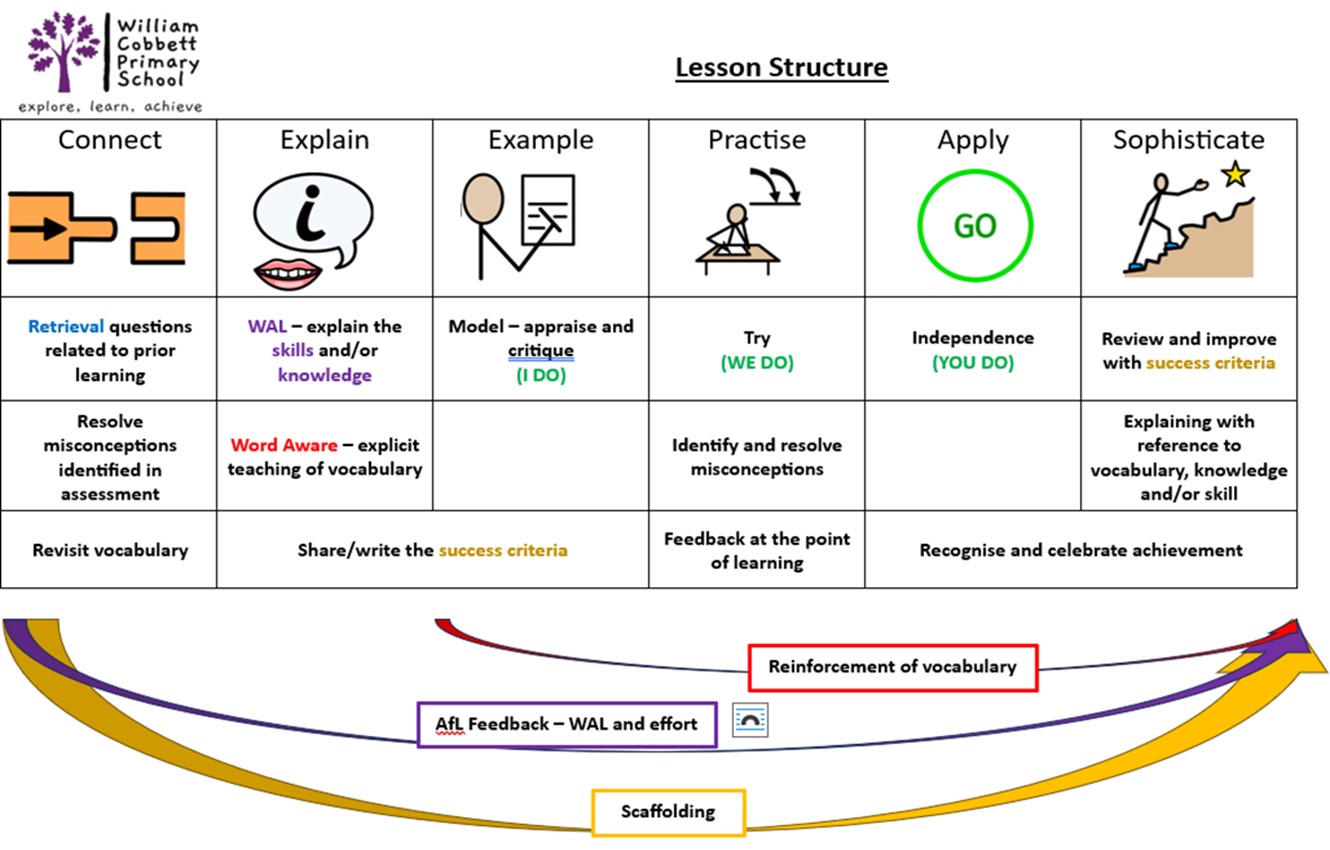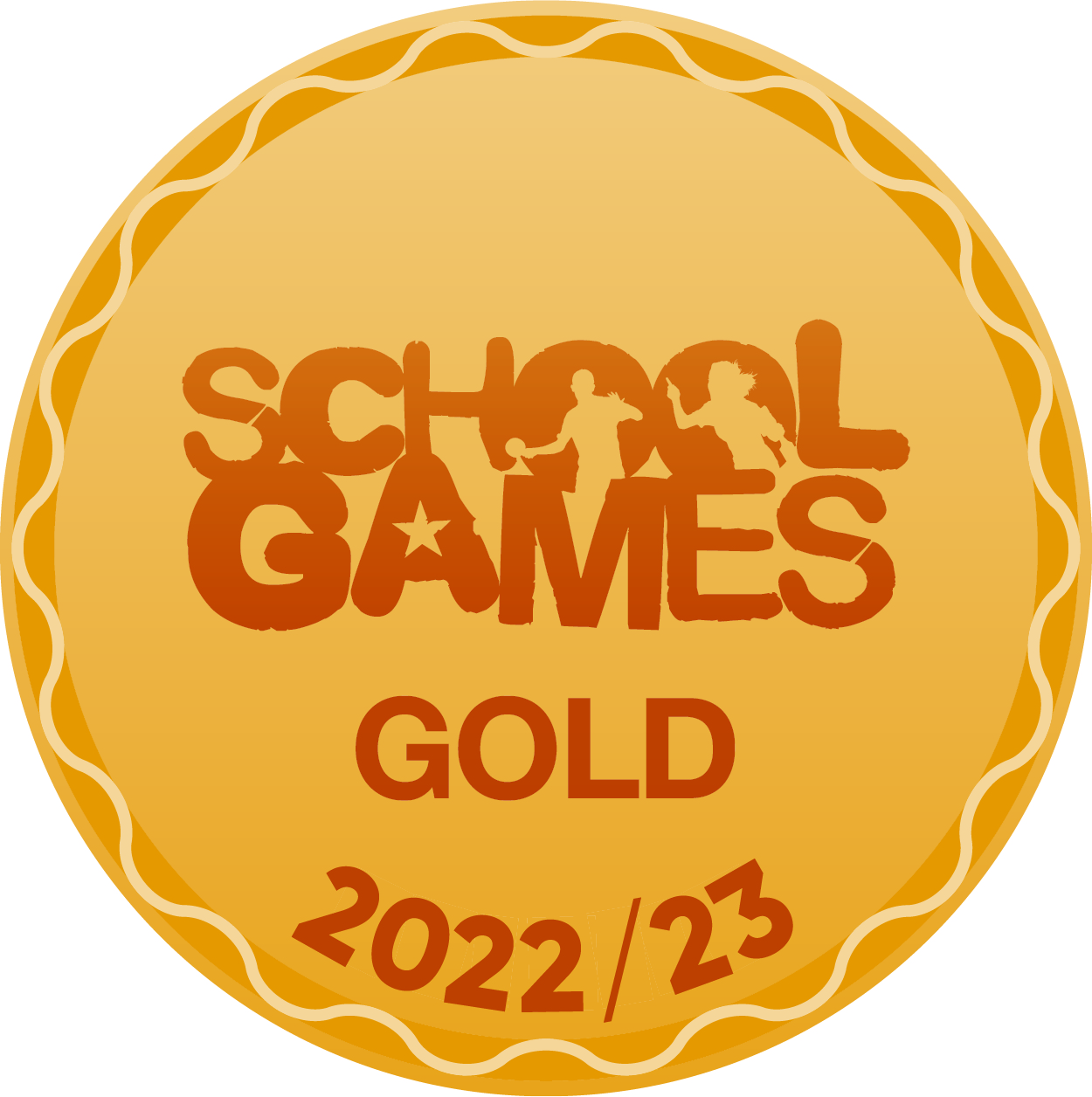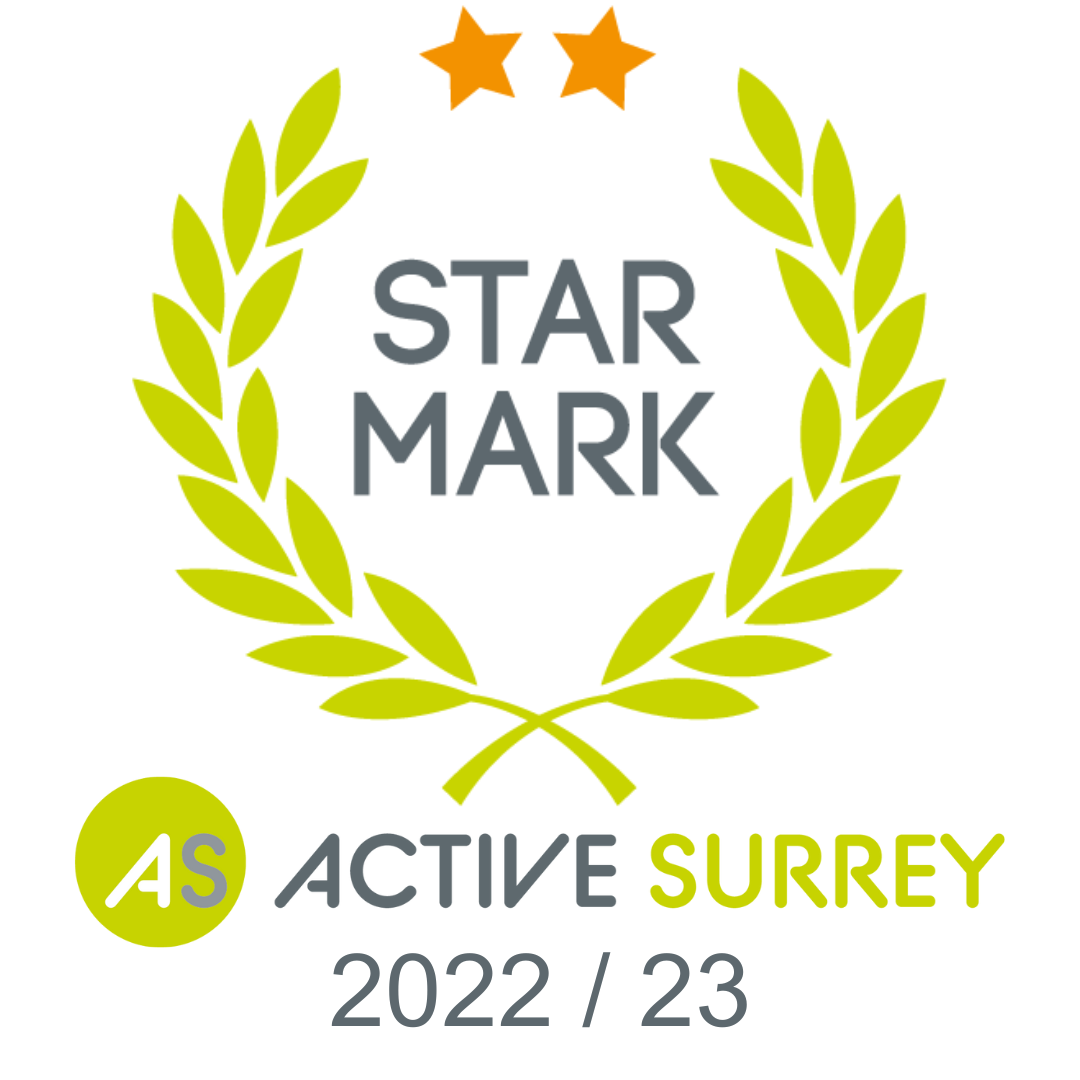Teaching and Learning approach
When you walk into a learning environment at William Cobbett you will see that a ‘typical’ lesson follows the ‘William Cobbett Lesson Structure’, a high-quality teaching approach underpinned by educational research. Teachers confidently and accurately use teaching techniques to gather a secure overview about whether the key learning has actually been learnt. If learning is not yet secure, then lessons are adapted, perhaps to repeat elements which have been misconceived, to ensure acquisition of the learning. Connect
Connect
Retrieval Practice takes place at the start of lessons to support pupils with retrieving material that they have previously learnt, to ensure a change in theirlong-term memory. Retrieval activities could look like multiple choice questions, explanations or true or false statements. Retrieval activities could be related to vocabulary, knowledge or skills taught the previous day, earlier in the year or even in previous years. Retrieval practice is also an opportunity to resolve misconceptions.
Explain
Pupils must know the knowledge and key skills you want them to learn and the language they are expected to understand and use. Teachers make learning objectives explicit to pupils through sharing the WAL (We Are Learning statement), there is no expectation that they need to be written down, but all pupils should be able to explain what the key learning of the lesson is.
Success criteria is either shared and discussed with children or for older children, could be devised with them. This is displayed and referred back to at various points. This can be either procedural (where appropriate) or state the desired outcomes to enable children to self-assess and identify their own next steps.
Vocabulary relevant to the lesson is pre-selected and explicitly taught at the beginning of the lesson using a Word Aware STAR approach (Select, Teach, Activate, Review). Vocabulary taught is displayed on subject display boards and put into a word pot and revisited frequently during retrieval activities to ensure that learning of these words ‘sticks’.
Example (I DO)
Teach to the top with expert instruction and modelling To learn how to do something, pupils need to watch and listen to teachers guide them through the process, step by step, before they make an attempt themselves. Modelling supports explanation and can help pupils to make abstract ideas concrete. Modelling could take the form of;
- Demonstrating the worked activity in front of pupils, using a visualizer.
- Thinking aloud to show the thought process.
- Showing it is ok to make a mistake and empathy, e.g. I find this bit challenging.
- Integrating quick fire questioning e.g. why am I doing this now?
- Providing model answers.
Practise (WE DO)
Guided practice, with aids such as worked examples and scaffolds (e.g. sentence starters, key word definitions, procedural steps), supports pupils to put their learning into practice. Effective feedback, class discussion and questioning resolves misconceptions and aids improvement before independence.
Apply (YOU DO)/ Sophisticate
Independent, deliberate practice provides pupils with the time they need to practise new material in a number of ways in order to master it. Scaffolding is reduced or removed for the majority of pupils. This is the component that will look the most different across curriculum areas, but all practice should be careful, deliberate and ideally just outside of student’s comfort zone.
Throughout independent practice, adults in the classroom will observe children’s learning, both within any focus group they are leading and also in the wider class, seeking any common misconceptions and then drawing the class back to go over these in a supportive way. Phrases such as ‘I can see that there are few people having the same problem’, ‘I clearly didn’t explain that as well as I could’ and ‘maybe we can all learn from this’ may be used.
Vocabulary taught in the lesson will be continuously repeated and verbal and written use by children will be celebrated. Success criteria will be revisited as a whole class, with groups or with individual children in an effort to improve and ‘sophisticate’ learning.
Teachers, adults and peers will focus praise on effort, demonstrating value of the “struggle of learning”.





